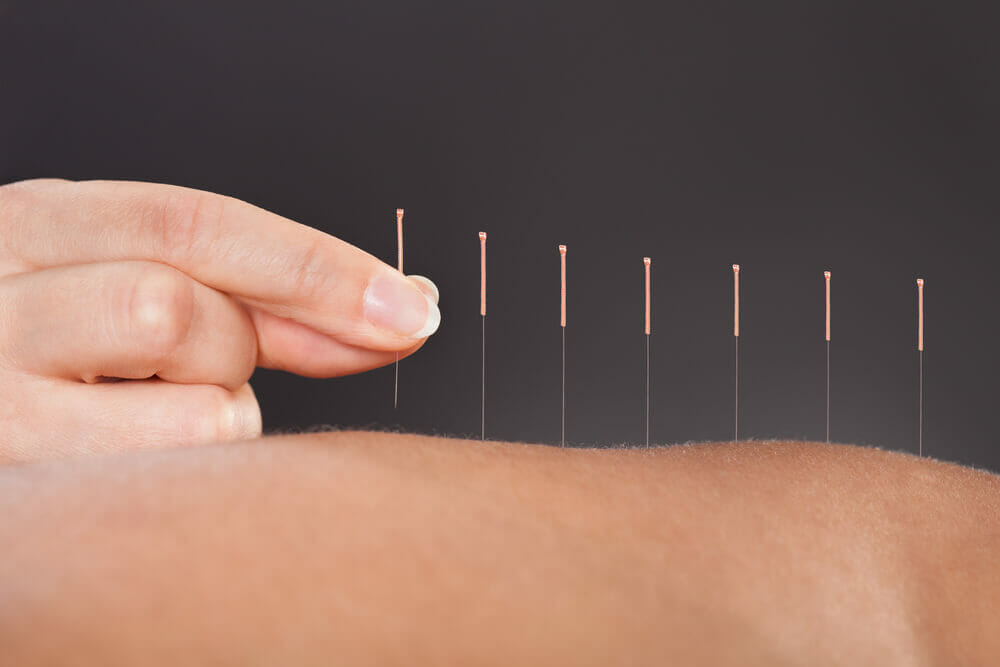
What Is Dry Needling?
Dry needle therapy in South Perth involves the use of small sterile needles which are inserted into the skin at certain myofascial trigger points around the body. These trigger points are also known as knots in the muscles. When the needle is inserted the local blood vessels dilate allowing an increase in circulation in the trigger point. Providing a fresh supply of oxygen and nutrients helps the muscle to relax back to its normal resting state.
Is Dry Needling The Same As Acupuncture?
Dry needling and acupuncture share a few similarities however they have very different methods. While acupuncture has been around for centuries, dry needling is a much more modern technique.
Acupuncture is primarily based on the traditional Chinese philosophy of energy, or “chi.” Fine sterile needles are inserted into specific points along the body’s energy pathways (meridians), which help to clear any energy blockages. This process encourages the normal flow of chi to resume so that the body can heal the condition being treated.
Dry needling also uses fine sterile needles; however, they are inserted into myofascial trigger points (knots) in the muscles. Myofascial trigger points form when a group of muscle fibres tighten and then fail to return to their normal resting length. This can cause blood vessels and nerves to become compressed and prevent the muscle from contracting and relaxing normally. When the needle is inserted into the knot, blood vessel vasodilation (widening) allows a fresh supply of nutrients to permeate the muscle fibres, helping them to relax and return to their normal resting length.
Dry needling and acupuncture are delicate procedures that require the expertise of trained and certified professionals. If you’re looking for dry needling physio clinics or seeking help from physio’s with expertise in providing acupuncture in South Perth, it is important to consult only the best.
What Causes Myofascial Trigger Points?
Myofascial trigger points form as part of the body’s natural protective response. This may happen when the body attempts to reduce the severity of an injury by tightening the muscles. A myofascial trigger point may also occur due to unexpected or fast movements, a sudden direction change, prolonged sustained postures, nerve impingement, illness or stress.
What Are The Benefits Of Dry Needling?
- Pain relief
- Improved range of motion in muscles and joints
- Reduces muscle spasms
- Can help with nerve pain
- Improves muscle activation
- Promotes healing
- Relaxes tight muscles
Is Dry Needling Safe?
Dry needle therapy is considered a safe form of treatment for many conditions when performed by a qualified practitioner. As with most treatments, there are some minor risks associated with dry needling. These include minor bruising, temporary soreness at the needle site and fatigue.
Everyone responds differently to treatment techniques including dry needling, however any symptoms experienced are usually mild and do not last for more than 24 to 48 hours after your treatment.
Does Dry Needling Hurt?
During a treatment, dry needling may cause a slight sting when the needle is inserted and removed. This is rare as the needles are very fine. This discomfort should last no more than a second. Sometimes you may feel a brief muscle twitch when the needle is inserted into the myofascial trigger point.
What Conditions Can Dry Needling Treat?
Dry needling in physio clinics is effective in treating a wide range of musculoskeletal conditions including:
- Back pain
- Neck pain
- Tension headaches
- Migraines
- Muscle tightness
- Hamstring injuries
- Sports injuries
- Temporomandibular joint disorder
- Whiplash
- Repetitive motion conditions such as carpal tunnel syndrome
- Joint problems
- Some forms of arthritis




